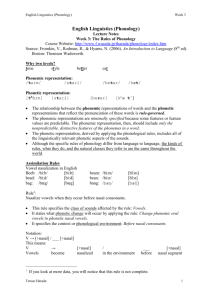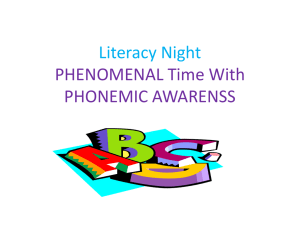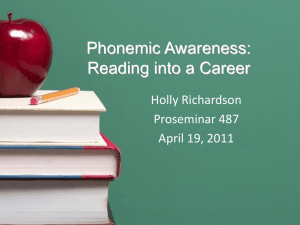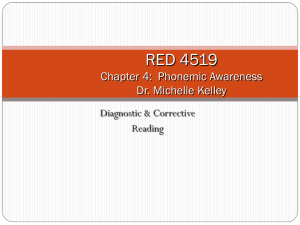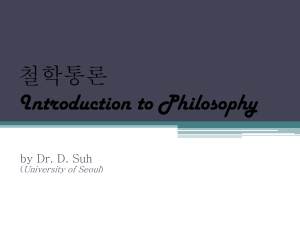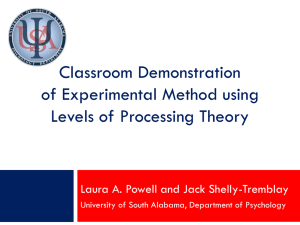Coats
advertisement
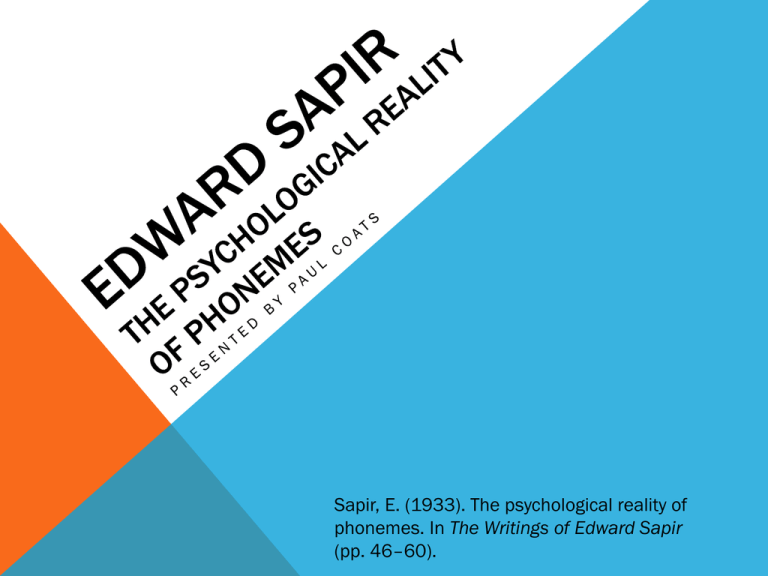
Sapir, E. (1933). The psychological reality of phonemes. In The Writings of Edward Sapir (pp. 46–60). HIS LIFE 1st to use comparative linguistics with the allegedly “too primitive” Native Amerindian languages HIS RESEARCH • Sapir (1933) was the first to argue explicitly that the phoneme is a unit of perception, by showing how phonemic perception could account for a variety of otherwise puzzling “errors” made by his native consultants. In one example, Tony, a native speaker of Southern Paiute being taught to write his language phonetically, transcribed [ˈpaːˌßaʰ] ‘at the water’ as [ˈpaːˌpaʰ]. (259) /paːpaː/ Dresher, B. E. (2011). The Phoneme. In M. van Oostendorp, C. J. Ewen, E. Hume, & K. Rice (Eds.), The Blackwell Companion to Phonology (1st ed., Vol. 1 General, pp. 241– 266). Malden, Mass.: Wiley-Blackwell. IN GRAVE NEED OF AUDACITY®, PRAAT©, AND IPA • …that the -ni of “this one” ended in a pure vowel with little or no breath release, while the –ni of “it makes a sound” had a more audible breath release, was properly –ni’. (52) • It does not seem, however, that there is an actual phonetic difference between the –s- (phonologically – s-) of such words as tlasatl “the stick takes an upright position on the beach” (=tla-satl), pronounced tlaṡ atl, and the –ṡ- of –’assatl above. (55) THE CLUB/POLE (PHONEMIC) DISTINCTION • Or better yet, Gold… • Obvious alloys, yellow, red, and white • Purity? 18k vs 24k? • /p/ [pʰ] / #___ [p] / s__ etc… “pot” “report”; “apply” “top” “spot” “empty”; “apple” https://www.ualberta.ca/~tnearey/Ling205/Week3/WBP honemesAndAllophonesEngCs4Up.pdf “TO THE NAÏVE SPEAKER AND HEARER…” Yellow gold is yellow gold • 18k or 24k • Diamond and graphite are different • Even though they are both made from pure Carbon • /p/ is /p/ • Whether it’s realized as [p] or [pʰ] • /t/ and /d/ are different • Despite their reduction to [ɾ] • (e.g. “latter” vs “ladder”) • NATIVE SPEAKER “ERRORS” OF ANALYSIS Trained Native Speaker (NS) transcribers of Amerindian languages • “Valuable evidence” for the phonemic structure of the language • “It is exceedingly difficult, if not impossible, to teach a native to take account of purely mechanical phonetic variations which have no phonemic reality for him” (48). • Even if he is a “young man of average intelligence” (i.e. “can read and write in English reasonably well”) • • However, “…a naïve native’s phonetic ‘ignorance’ proved phonologically more accurate than the scientist’s “knowledge.’” LET’S TEST IT ON… • Trained NS linguists of “average intelligence” 1) Find words in American English with [ʒ] in them • Asia, seizure, leisure, pleasure, garage, ... 2) Which [ɾ] in “international” is a tap and which is a flap? Which vowels are nasalized? • • The 1st is a tap (in), the 2nd a flap (out) All of the vowels are nasalized WAS IT BECAUSE YOU WERE “CARELESS,” OR BECAUSE YOU TEND TO JUST, “CONFUSE SOUNDS”? • Neither! • Due to the phonology of the language • Ex. Southern Paiute [θ]? FURTHER COMPLICATIONS • Homonymous words (not necessarily homonyms?) • Phonetically identical, but phonemically distinct • “…it is possible for perfectly homonymous words to give the speaker the illusion of phonetic difference because of the different contexts in which they appear or because the different positions they occupy in their respective systems” (52). • Ex. of this sort of illusion: • “Bored”/“board” TRANSCRIPTION: PHONETIC VS. PHONEMIC NSs have a subtle knowledge of the phonology of their language, but are poor at phonetic transcriptions “…were English not a written language…” would Sapir believe NSs that pin/pen are different? • • • • Ex. Korean “can’t” • Prounounced [mᵇot̚-tʰé] but written “mos hae” Phonemic transcriptions are bad for learners of the language, because they will perceive the phonemes as their native ones • Sp. nacional, fruta, juez, etc. NNS TRANSCRIBERS • NS of English over-transcribing glottal stops • Sapir: “But English has no glottal stop…the glottal stop is the most unreal or zerolike of consonants to an English or American ear” (5859) • Yet it is a clear allophone in most dialects of English, is it not? • …was Sapir, then, a “victim of his phonologic system”? NNS TRANSCRIBERS (CONT.) • NS of English over-transcribing glottal stops • Still, Sapir had a good explanation: • Because we're not used to hearing short vowels at the end of the word (unless it is followed by a consonant), the transcribers automatically placed the newly learned glottal stop phonetic marker when they heard a short vowel at the end of a word. CONCLUSIONS • Developments 1. Discribed the pros and cons of training a NS vs. a NNS as a transcriber 2. In the process, found psychological proof of a phonemic representation in the mind of NSs 3. Became the first to publicly argue for the phoneme as a unit of perception

![Edward Sapir [1884-1939] - Frostburg State University](http://s2.studylib.net/store/data/005569801_1-deb1132f1ae8f0e8d561247b81673874-300x300.png)
